Building the NextGen Supply Chain: Keeping pace with the digital economy
Peerless Media’s 2017 Virtual Summit shows how creating a data-rich ecosystem can eliminate borders, establish visibility and optimize logistics and supply chain management operations to meet the digital mandate.
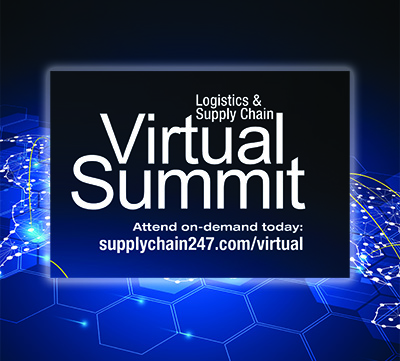
In today’s dynamic business environment, our old ways of managing logistics and supply chains are giving way to new strategies, practices and processes—all of which are designed to meet the requirements of our new digital economy.
It’s an era where the Amazon effect is making “same day” almost seem too late, pushing customers to expect their orders to be in stock and ready to deliver on demand, and making “connected commerce” affect everything from consumer goods to building materials to specialty chemicals—and everything in between.
To help companies operate successfully in this environment, the editorial teams at Supply Chain Management Review and Logistics Management assembled an impressive lineup of supply chain experts for the 2017 Virtual Summit.
“NextGen Supply Chain: Keeping Pace with the Digital Economy” defines new concepts and solutions that are helping logistics and supply chain operations create complex, yet seamless supply chain networks comprised of connected customers, suppliers, competitors, carriers and third-party providers.
Here are the key points covered during the conference and insights into how you can leverage your own digital supply networks and achieve your supply chain goals in 2018 and beyond.
You can still register and view the Virtual Conference for free here:
Keynote
The sprint to digital success
 In today’s supply chain environment, no shipper can afford to stagnate at the gate. In fact, by launching “digital sprints” they’re pushing through the hype and getting their logistics and supply chain organizations to real, tangible outcomes. It may not be today, it may not even be tomorrow—but certainly the digitization of manufacturing, distribution, logistics and supply chain is on the horizon.
In today’s supply chain environment, no shipper can afford to stagnate at the gate. In fact, by launching “digital sprints” they’re pushing through the hype and getting their logistics and supply chain organizations to real, tangible outcomes. It may not be today, it may not even be tomorrow—but certainly the digitization of manufacturing, distribution, logistics and supply chain is on the horizon.
In his keynote, PS Subramaniam, principal at A.T. Kearney, focuses on the digitization of the supply chain and what it means for shippers of all sizes and across all industries. Specifically, he addresses how to successfully orchestrate “digital sprints” that can deliver quick and tangible outcomes without having to predict the future or rewire the entire IT infrastructure.
“People have always talked about the digital supply chain, but in the last five to seven years the idea has really evolved,” Subramaniam points out in his keynote, adding that technology adoption rates “are increasing exponentially,” and compares the first telephone to the modern-day tablet or smartphone. “It’s not an IT project, nor is digital a specific technology,” he says. “It’s an approach and an ability.”
Pointing out that more than 150 technologies are having an impact on the supply chain at any given moment—but that not all of them are applicable to every supply chain—Subramanian says that the primary issue holding companies back is the process of filtering through these options.
“Digital is here and now; your companies are being disrupted today,” he concludes. “It’s not hard to get started. In fact, small experiments are a good way to ‘dip your toes,’ and your teams most likely already know which experiments to start with.”
Session 1
Benefits of Blockchain: Fact or wishful thinking?
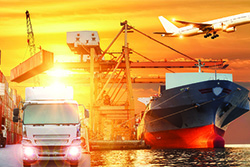 With the buzz around blockchain getting a little louder every year, Ken Cottrill, research and marketing development lead at MIT’s Center for Transportation & Logistics, focuses his conference session on defining blockchain technology; determining its potential in logistics and supply chain management; and unlocking the benefits blockchain may hold in the future.
With the buzz around blockchain getting a little louder every year, Ken Cottrill, research and marketing development lead at MIT’s Center for Transportation & Logistics, focuses his conference session on defining blockchain technology; determining its potential in logistics and supply chain management; and unlocking the benefits blockchain may hold in the future.
A continuously growing list of records called “blocks,” which are linked and secured using cryptography, blockchain is expected to affect the supply chain in big ways in the coming years. Giving examples of blockchain usage from the food industry, Cottrill helps attendees understand the fundamentals of the concept and why it has become such a big buzzword.
By serving as a virtual “ledger” across the supply chain, for example, blockchain establishes a reliable chain of accountability that’s particularly relevant for the food industry and high-value goods.
“The bigger the blockchain, the more difficult it is to tamper with the contents,” Cottrill points out. “This is especially important for supply chains because they share huge volumes of sensitive information.” Collaboration is the biggest advantage that blockchain technology provides, he points out, with high-level collaboration being a true challenge due to trust issues.
“The fact that this trust is embedded in blockchain,” he concludes, “we believe will pave the way for a much higher level of collaboration in supply chains in the future.
Session 2
The benefits of Cloud-based TMS & SCM
 As one of the first supply chain applications to make its way into the Cloud, transportation management systems (TMS) have been steadily shifting away from on-premise/installed solutions to Web-based platforms where shippers, business partners, carriers, third-party logistics providers (3PLs)—and even customers—can access pertinent information via the Web on a 24/7/365 basis in real-time.
As one of the first supply chain applications to make its way into the Cloud, transportation management systems (TMS) have been steadily shifting away from on-premise/installed solutions to Web-based platforms where shippers, business partners, carriers, third-party logistics providers (3PLs)—and even customers—can access pertinent information via the Web on a 24/7/365 basis in real-time.
Both accessible and affordable for shippers, Cloud-based TMS offer distinct advantages in a world where transportation-related costs and complexities increase year over year. In this presentation, Dwight Klappich, research vice president at Gartner, highlights the strides that cloud-based applications have made in the end-to-end supply chain management (SCM) world.
Even with these clear benefits, however, Klappich says that Cloud-based TMS adoption isn’t quite where it needs to be. That could be changing in the near future. Based on Gartner’s “10th Annual User Wants and Needs Survey,” Klappich’s presentation introduces attendees to the newest Cloud trends in logistics, and points out that 43% of companies currently have at least one SCM application in the Cloud. Of those users, 58% prefer multi-tenant Cloud (i.e., the same instance for all clients) while 42% prefer dedicated Cloud (unique for each customer).
“Transportation is an industry with unique uses for the Cloud,” says Klappich, “and right now, North America is leading in Cloud adoption compared to other countries.”
Session 3
3PL Evolution: Meeting the digital commerce mandate
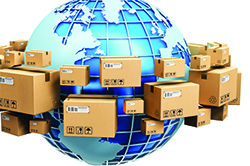 Spurred on by customer demands, a rapid growth in online sales, and a seemingly endless lineup of new technological innovations, the retail environment—and the global supply chain that supports it—is changing rapidly. In turn, it’s pulling transportation and warehouse/DC operations right along with it.
Spurred on by customer demands, a rapid growth in online sales, and a seemingly endless lineup of new technological innovations, the retail environment—and the global supply chain that supports it—is changing rapidly. In turn, it’s pulling transportation and warehouse/DC operations right along with it.
And because so many shippers rely on reputable, reliable logistics partners to help them get their goods from Point A to Point B, third-party logistics firms (3PLs) are smack in the middle of this evolution.
In this session, Evan Armstrong, president of Armstrong & Associates, takes an in-depth look at how the world’s 3PLs are adjusting to help shippers upgrade their transportation management IT; offer omni-channel fulfillment support; tackle mounting returns issues; and manage end-to-end logistics solutions designed to keep today’s retailers on the cutting edge.
Pointing to cheap oil, an increase in Chinese wages, the proliferation of e-commerce, and the use of robotics in the supply chain as a few of the key trends currently affecting the 3PL industry, Armstrong says that companies operating in the space are adjusting their service offerings to help shippers “keep pace with digital commerce and meet the demands of the ever-fickle consumer.”
He also discusses how shippers can benefit from fully leveraging modern 3PL services, and highlights how blockchain, 3D printing, and the ongoing push for more automation will continue to drive innovation for both 3PLs and shippers in 2018 and beyond.
Session 4
Solving critical last-mile challenges
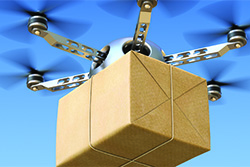 The “last mile” can be a pretty confusing place for supply chain managers who are scrambling to figure out how to get orders from the last distribution point to the final destination in the most efficient, expedient manner possible.
The “last mile” can be a pretty confusing place for supply chain managers who are scrambling to figure out how to get orders from the last distribution point to the final destination in the most efficient, expedient manner possible.
In fact, finding solutions for the last-mile delivery challenge is an ongoing concern for companies that ship goods directly to customers. And as the volume of e-commerce shipments has grown exponentially, that problem has become even more acute. In fact, exactly how a shipper manages its last-mile deliveries can make or break a business.
Ready to help, Matthias Winkenbach, research scientist at MIT’s Center for Transportation & Logistics, puts on a session meant to break down some of those barriers and to get shippers thinking about how to jump even their highest last-mile hurdles. He does this by presenting a number of growing last-mile options, a few new technologies and subsequent strategies for solving these challenges.
“The last mile is the most complex, and the most difficult to optimize part of a supply chain,” says Winkenbach, noting that trends like urbanization are creating a continuous increase in the number, size, and density of cities—making operations more and more complex.
“Big city density is skyrocketing and is one of the main roadblocks for last-mile logistics.”
With this in mind, Winkenbach says static inventory may not always cut it, and that mobile inventory will be the future. He sees data analytics and geo-referenced transactional data for more accurate planning, routing, dispatching and design decisions as key enablers of better last mile orchestration.
“When you can visualize demand and see how it evolves, and see “hot spots” based on time of the day, you can better anticipate demand,” he adds.
Session 5
Global trade management in the digital economy
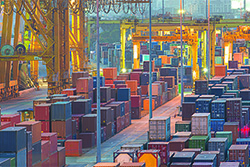 On track to grow by 3.6% in 2017, world merchandise trade volumes hit new highs after growing by just 1.3% the prior year, according to the World Trade Organization.
On track to grow by 3.6% in 2017, world merchandise trade volumes hit new highs after growing by just 1.3% the prior year, according to the World Trade Organization.
And just when shippers thought global trade management couldn’t get any more complex, a new presidential administration takes office and rocks the boat on existing and proposed trade rules and agreements.
In this virtual conference session, Beth Pride, president of BPE Global, covers how global logistics and supply chain operations will require more support than ever in navigating the continuous and ever shifting flow of global trade.
“Trade compliance is an integral part of the supply chain process,” Pride points out, noting that Trump pulling out of the TPP trade agreement, the potential NAFTA renegotiation and the Korea-U.S. free trade agreement are all having an impact on global trade management right now. That’s where global trade management (GTM) software comes in by offering benefits like risk mitigation, brand protection, cost savings, and scalability.
“Trade is more unpredictable than it has ever been,” says Pride, “and GTM automation could help manage these changes—and potential changes—so that shippers aren’t as drastically affected.”
Session 6
Robotics in Supply Chain: The future is closer than you think
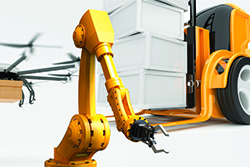 When it comes to the application of robotics inside the warehouse, distribution center (DC) and fulfillment operations, the time is now. In fact, recent research from IDC finds that global spending on robotics and related services will more than double by 2020, growing from $91.5 billion in 2016 to more than $188 billion in 2020.
When it comes to the application of robotics inside the warehouse, distribution center (DC) and fulfillment operations, the time is now. In fact, recent research from IDC finds that global spending on robotics and related services will more than double by 2020, growing from $91.5 billion in 2016 to more than $188 billion in 2020.
While robotics may still be emerging in logistics operations, early adopters are finding that it is reliable, productive and cost effective in the right application. In this session, IDC research manager John Santagate discusses the current state of the logistics robotics market; talks about where and how robotics is most efficiently and effectively being applied; and discusses how early adopters are driving future innovation in the space.
“Robots are more than just automation, and they are more intelligent than just speed and repetition,” Santagate says, pointing out that robotics increase productivity, reduce operating costs and improve product quality. “All of this is why people should start thinking about robotics—now.”
Santagate says cognitive capabilities, movement and dexterity, and interaction all come together to make robotics particularly useful in logistics and supply chain. Cognitive capabilities, for example, allow robots to move freely in a space and avoid barriers, while movement and dexterity allow the machines to pull boxes off shelves, pack boxes, load pallets, and handle assembly.
“Robotics are enabling people to do more with less,” says Santagate, who advises shippers to embrace the inevitable proliferation of robots, identify where and how robotics can add value, and to “think of robots as modern tools to support business process execution.”

Article Topics
News & Resources
Latest in Materials Handling
ASME Foundation wins grant for technical workforce development The (Not So) Secret Weapons: How Key Cabinets and Asset Management Lockers Are Changing Supply Chain Operations MODEX C-Suite Interview with Harold Vanasse: The perfect blend of automation and sustainability Consultant and industry leader John M. Hill passes on at age 86 Registration open for Pack Expo International 2024 Walmart chooses Swisslog AS/RS and software for third milk processing facility NetLogistik partners with Vuzix subsidiary Moviynt to offer mobility solutions for warehouses More Materials HandlingSubscribe to Materials Handling Magazine

Find out what the world's most innovative companies are doing to improve productivity in their plants and distribution centers.
Start your FREE subscription today.
April 2024 Modern Materials Handling

Latest Resources











